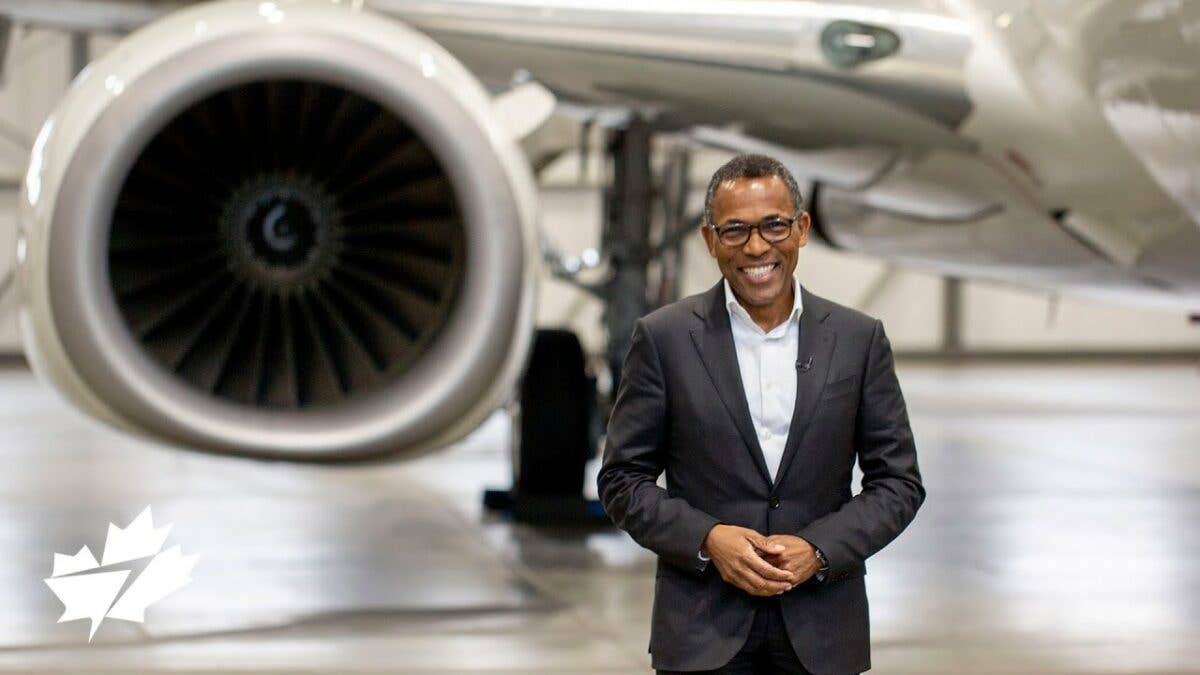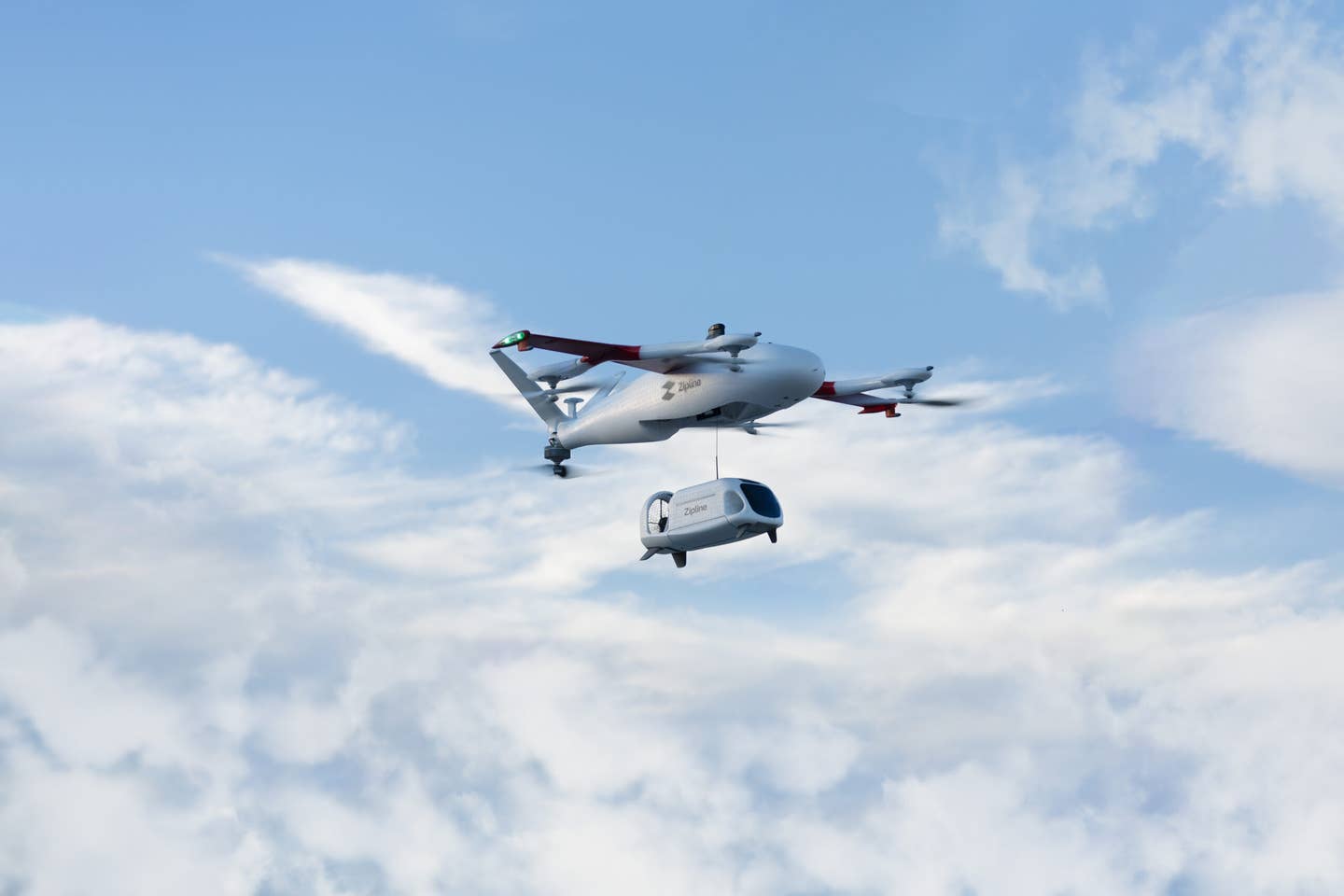FAA Administrator: AAM Plan on the Horizon
‘If you’re looking for the code to the front door of the next generation of aviation, here it is,’ FAA chief Billy Nolen said.

Acting FAA head Billy Nolen, who will step down this summer, shared details on the agency’s future plans for drones and AAM. [Credit: CNW Group/WESTJET]
The FAA’s release of an updated blueprint for urban air mobility (UAM) operations last week was a positive development for electric vertical takeoff and landing (eVTOL) and air taxi technology. But on Wednesday, acting FAA Administrator Billy Nolen provided a larger update on the agency’s vision.
At the Association for Unmanned Vehicle Systems International’s Xponential 2023 trade show in Denver, Nolen delivered a keynote speech in which he detailed the FAA’s plans for expanded drone and advanced air mobility (AAM) operations.
According to the FAA chief, the agency later this month will release an AAM Implementation Plan—but rules for beyond visual line of sight (BVLOS) flights are still…well, out of sight.
“I’m here today because the reality of drones and AAM are much closer than we thought,” Nolen said. “But before this vision can be fully realized, a lot of work must be done.”
The FAA’s AAM Implementation Plan will help enable the “initial” operations described in its aforementioned blueprint. The plan will clarify responsibilities for AAM stakeholders and lay out the infrastructure and capabilities required for early AAM operations alongside other air traffic.
“If you’re looking for the code to the front door of the next generation of aviation, here it is,” Nolen said. “These documents are a hard look at what it’s going to take to have an air taxi safely take you where you need to go.”
Per the UAM blueprint, these initial services will resemble helicopter operations, making use of existing routes and infrastructure, like helipads. Once the implementation plan is released, the FAA will work with stakeholders to refine that strategy and get AAM off the ground. And if all goes according to plan, we could see flying taxis in our skies within five years.
“When it comes to advanced air mobility, we expect to see great demand for these operations by the time the Los Angeles Olympics take place in 2028,” Nolen said.
So far, the FAA has charted the path to certification for two eVTOL manufacturers, Joby Aviation and Archer Aviation, each of which has an air taxi partnership with a major U.S. airline. Safety permitting, it hopes to issue the first eVTOL airworthiness certificate in 2024. And by then, it expects to have ironed out the standards pilots must meet to fly those aircraft.
Looking further out, Nolen emphasized the need for global collaboration on AAM and the establishment of key infrastructure, like dedicated air taxi corridors. Already the FAA is working with agencies in the U.K., Canada, Australia, New Zealand, Japan, and South Korea to create a common regulatory framework, aligning their standards and certification processes.
The FAA chief added the agency is crafting a set of AAM safety standards and regulations. He pointed out that because many eVTOL and air taxi services will carry people, a single accident could derail public confidence in the technology—even more so than drones.
“We are certifying eVTOLs under our existing regulations and are writing the standards that pilots will have to meet to fly them,” an FAA spokesperson told FLYING. “We expect to release the pilot standards this summer. The Implementation Plan discusses how these initiatives and our other work will come together to allow the air taxi industry to scale safely.”
Speaking of drones, Nolen had plenty to say about them, too: “We’ve made good progress over the past few years. We’ve enacted the Remote ID rule, and the Operations Over People rule. But to unleash the full potential of drones, we need to enable routine operations beyond the pilot's visual line of sight.”
Unfortunately for drone firms, the agency still has not set a date to issue a Notice of Proposed Rulemaking for BVLOS, and Nolen acknowledged the criticism from some industry stakeholders that the agency isn’t moving fast enough.
But he countered that the slow pace is dictated by safety concerns and pointed to Matternet's watershed FAA certification as a sign of progress. The agency awarded another groundbreaking approval to Percepto earlier this week.
“We’re in the early stages of developing the rule. We’ve received a lot of input from stakeholders, and the public, over the past year,” Nolen said, referring to the FAA’s BVLOS Advisory Rulemaking Committee. “Our initial focus is on normalizing standard operations for BVLOS flights at low altitudes. This will enable drone use for functions like infrastructure inspections and agricultural operations.”
After that, he predicted, the agency will tackle the integration of drone delivery services into complex airspace. But until a set of BVLOS rules is finalized, it will continue to grant provisional waivers, and it expects those requests to increase.
While waivers are a stopgap solution, they may provide rulemakers with valuable information around safe integration. Worth noting, however, is the proposed Increasing Competitiveness for American Drones Act of 2023 would require the FAA to submit a Notice of Proposed Rulemaking on BVLOS within six months of passage.
More progress could be made on that front at the FAA’s Drone Symposium and first AAM Summit in August, where industry stakeholders will gather to discuss key challenges and solutions. By that point, though, Nolen will have stepped down as administrator.
“I’m honored to have helped lead the safety and integration efforts for this new era and to have been a part of bringing about the resulting benefits to the public,” he said to the Xponential crowd. “And I’m looking forward to seeing how things come together over the next few years and beyond.”
The FAA’s succession plan for Nolen is unclear. President Joe Biden’s pick to replace the outgoing administrator, Denver International Airport CEO Phil Washington, bowed out of the race earlier this year following Republican pushback, and no other candidate has been nominated.
That could be consequential—right now, there’s no guarantee that Nolen’s successor will share his philosophy on drones and AAM. To ensure his plans come to fruition, the FAA will need to find someone with similar values. Otherwise, it could risk more regulatory gridlock.
“As Mr. Nolen has said, we have a deep bench of executive talent who are absolutely up to the task of ensuring the continued safety of the national airspace system,” the FAA told FLYING.
According to a report last week, though, Biden is now eyeing AAM executive Mike Whitaker for the role. Whitaker, the COO of Hyundai Motor Group’s eVTOL arm Supernal, served as FAA deputy administrator and chief nextgen officer under the Barack Obama administration, where Whitaker helped modernize the country’s air traffic control system.
Whitaker also brings close to two decades of experience as a lawyer and executive in the airline industry. And in his time with the FAA, he became a certified pilot.
Given his background and current role at an AAM firm, Whitaker appears to be a good pick to continue Nolen’s work. But first, the FAA will need to approve him.
Beyond the leadership transition, the agency faces another looming deadline. In September, its current funding and authority are set to expire, and a new FAA Reauthorization Act will need to be passed. According to reports, it’s desperate for fresh funding, and reauthorization will set its budget and priorities for the next five years.
So, while Nolen’s comments this week in Denver described clear skies ahead for drone and AAM operations, his departure and the September deadline could shake up things. For now, keep an eye out for the AAM Implementation Plan—and watch for Biden to officially nominate Whitaker.

Sign-up for newsletters & special offers!
Get the latest FLYING stories & special offers delivered directly to your inbox






